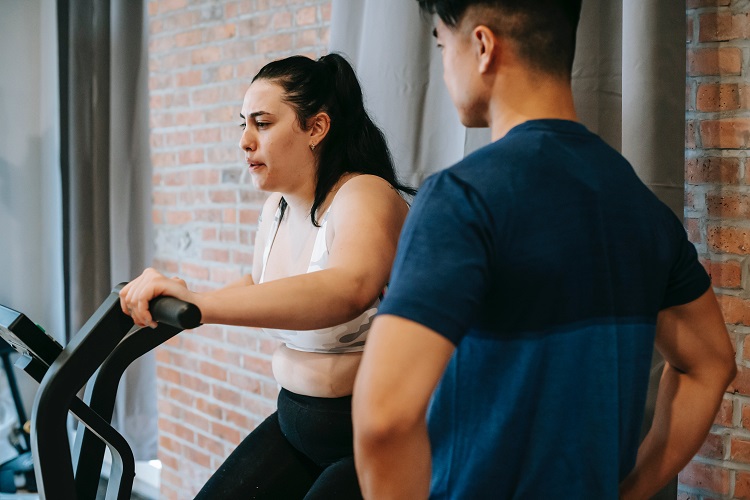Weight loss is a goal for many people, but it’s often misunderstood. Some turn to crash diets, others obsess over the number on the scale. But one of the most effective, long-lasting, and empowering ways to lose weight—and keep it off—is through exercise. But what kind of exercise is best for weight loss? That’s what this guide will explore in depth.
While nutrition accounts for a large part of weight loss, exercise accelerates the process, boosts metabolism, and reshapes your body. And just as important, it helps with mood, sleep, energy, and overall quality of life. This comprehensive guide walks you through the best types of exercises for weight loss, and how to make them work for you.
Understanding the Role of Exercise in Weight Loss
Weight loss occurs when your body burns more calories than it consumes—creating a calorie deficit. While reducing caloric intake helps, increasing caloric expenditure through exercise is essential for healthy fat loss.
Exercise not only burns calories during your workout, but certain types of training (like strength and HIIT) also increase post-exercise calorie burn—known as the “afterburn” effect or excess post-exercise oxygen consumption (EPOC).
Beyond the numbers, exercise helps you preserve lean muscle while burning fat. This is crucial because muscle is metabolically active—it burns more calories at rest than fat. The more muscle you maintain or build, the easier it becomes to lose fat and maintain your weight.
Cardiovascular Exercises: The Fat-Burning Powerhouses
Cardiovascular exercise, also known as aerobic exercise, raises your heart rate and improves your ability to transport oxygen. It’s the go-to for burning calories quickly and efficiently.
Running and Jogging
Running is one of the highest-calorie-burning activities available. A 155-pound person can burn about 600 calories per hour jogging and 800+ when running at a faster pace. Incorporating hills, intervals, or sprinting can make running even more effective. It also builds cardiovascular endurance and mental toughness.
If you’re new to running, start with intervals—walk for two minutes, jog for one. Gradually increase your jogging time as your stamina builds.
Cycling
Whether outdoors on scenic roads or indoors on a stationary bike, cycling is excellent for burning fat and improving leg strength. A vigorous session can burn between 500 to 1000 calories per hour. Spin classes often use interval formats, which means you’ll alternate between high and low intensity—perfect for fat loss.
Cycling is also low-impact, making it easier on the joints for those who may struggle with high-impact exercises.
Swimming
Swimming works every major muscle group and is perfect for those with joint pain or injuries. A moderate to vigorous swim session can torch 400 to 700 calories per hour, depending on the stroke and intensity.
Freestyle and butterfly strokes burn the most calories, while breaststroke and backstroke are gentler but still effective.
Walking
While walking may seem basic, it’s powerful for those just beginning their fitness journey. Walking briskly for an hour can burn around 300–400 calories. Over time, those walks add up. Walking after meals also helps stabilize blood sugar and boost digestion.
For weight loss, aim for at least 10,000 steps a day and increase the pace or terrain when you’re ready for more challenge.
Read more: Pause in African HIV Vaccine Trial Due to Unpromising Results
High-Intensity Interval Training (HIIT): Short, Powerful, Efficient
HIIT is one of the most effective and time-efficient ways to lose weight. It involves alternating periods of high-intensity exercise with short rest or lower-intensity movements. For example, 30 seconds of sprinting followed by 30 seconds of walking, repeated for 20 minutes.
HIIT triggers the afterburn effect, meaning your body continues to burn calories long after the workout is done. A 20-minute HIIT workout can be more effective than a 45-minute moderate-intensity session.
A sample HIIT routine might include jump squats, burpees, mountain climbers, and push-ups in rapid succession. You can perform HIIT using bodyweight, dumbbells, a stationary bike, or even swimming intervals.
Strength Training: Build Muscle, Burn Fat
While cardio burns calories during the session, strength training builds lean muscle mass, which increases your resting metabolic rate. That means you burn more calories all day long—even while sleeping.
Strength training also reshapes your body. As you build muscle and lose fat, you’ll appear leaner and more toned.
Free weights, weight machines, resistance bands, and even your own body weight are all excellent tools for building strength.
Focus on compound movements—exercises that work multiple muscle groups at once—for the most efficient fat-burning. These include squats, lunges, deadlifts, bench presses, and rows. Strength training 3 to 4 times per week can lead to remarkable fat loss and body transformation over time.
Circuit Training: The Best of Both Worlds
Circuit training is a form of exercise that combines strength training and cardio in a fast-paced, efficient format. It typically involves moving through a series of exercises with little to no rest between them.
A sample circuit might include 1 minute of squats, push-ups, kettlebell swings, jumping jacks, and planks, repeated for 3–4 rounds.
This style of training keeps your heart rate elevated while building strength—making it one of the most effective approaches for weight loss. It also keeps your workouts varied and exciting.
Group Fitness: Stay Motivated and Engaged
Working out in a group can be more motivating than exercising alone. Whether you’re dancing, spinning, or boot camping your way to weight loss, group fitness offers structure, accountability, and community.
Zumba classes burn fat through rhythmic movement, with some participants torching up to 500–700 calories per hour. Spinning provides high-intensity intervals that strengthen legs and burn serious calories. Boot camps blend strength, cardio, and agility drills for a full-body workout that boosts metabolism.
If you thrive on energy and motivation from others, group classes may be your ideal way to stay committed.
Flexibility & Core Work: Supporting the Foundation
Though not typically known for their calorie-burning capacity, yoga and Pilates play an essential supporting role in weight loss. They improve mobility, balance, alignment, and mental focus.
Yoga, especially Power Yoga or Vinyasa Flow, combines strength, flexibility, and mindfulness in a challenging format. Practicing yoga regularly helps manage stress, which is a major contributor to emotional eating and weight gain.
Pilates emphasizes core engagement and lean muscle toning. When added to your weekly routine, it enhances posture, stabilizes muscles, and complements your strength and cardio work.
Functional Training: Practical, Full-Body Movement
Functional training helps improve your daily movement patterns while burning fat and building strength. Exercises often mimic real-life movements, which reduces the risk of injury and improves balance and coordination.
Kettlebell workouts, which include swings, snatches, and Turkish get-ups, offer dynamic, explosive fat-burning potential.
Medicine ball exercises—such as slams, wall throws, or twists—work your entire body and train your core, shoulders, and back while increasing your heart rate.
Outdoor Fitness: Nature’s Gym
Exercising outdoors adds variety and fun to your routine while delivering fresh air and vitamin D.
Hiking burns major calories, especially on hilly or uneven terrain. It also doubles as a great mental health boost.
Rowing, either on water or a rowing machine, delivers a full-body workout with emphasis on the back, shoulders, legs, and core.
Jumping rope, often overlooked, is one of the most effective cardio exercises. It improves coordination and burns up to 600 calories per hour—making it a powerful weight loss ally.
Make Movement a Lifestyle
Even outside of traditional workouts, daily activity helps with long-term fat loss. Parking farther away, taking the stairs, doing chores vigorously, playing with your kids, or simply walking during phone calls—all add up.
Look for opportunities to move every day, even in short bursts. Ten minutes here, twenty minutes there—it all contributes to your total energy expenditure.
Designing Your Weight Loss Workout Plan
To get the best results, consistency is essential. Here’s how to structure your weekly workout schedule:
-
Aim for at least 150 minutes of moderate-intensity or 75 minutes of vigorous-intensity cardio per week.
-
Include 2 to 4 strength training sessions to preserve and build muscle.
-
Add one or two flexibility or recovery sessions, like yoga or stretching.
-
Include variety to avoid plateaus and keep things interesting.
Most importantly, listen to your body. Progress may not be linear, but with regular effort, results will come.
The Mental and Emotional Benefits
Exercise isn’t just about calories—it’s about confidence, empowerment, and resilience. As you work out, you build discipline, reduce stress, and learn to trust your body. Many people find their self-image improves far before they reach their “goal weight.”
Weight loss becomes less about the number on the scale and more about feeling strong, capable, and in control of your health and life.
Final Thoughts
There is no one single “best” exercise for weight loss. The most effective workout is the one you enjoy and can stick with long-term. Whether it’s high-intensity intervals, strength training, swimming, dancing, hiking, or a mix of everything—commit to movement, nourish your body, and stay patient with your progress.
With consistency and self-compassion, you can lose weight in a way that feels empowering, sustainable, and life-changing.
Read more: Gay Singles with HIV: Challenges, Strength, and Relationship Journeys




